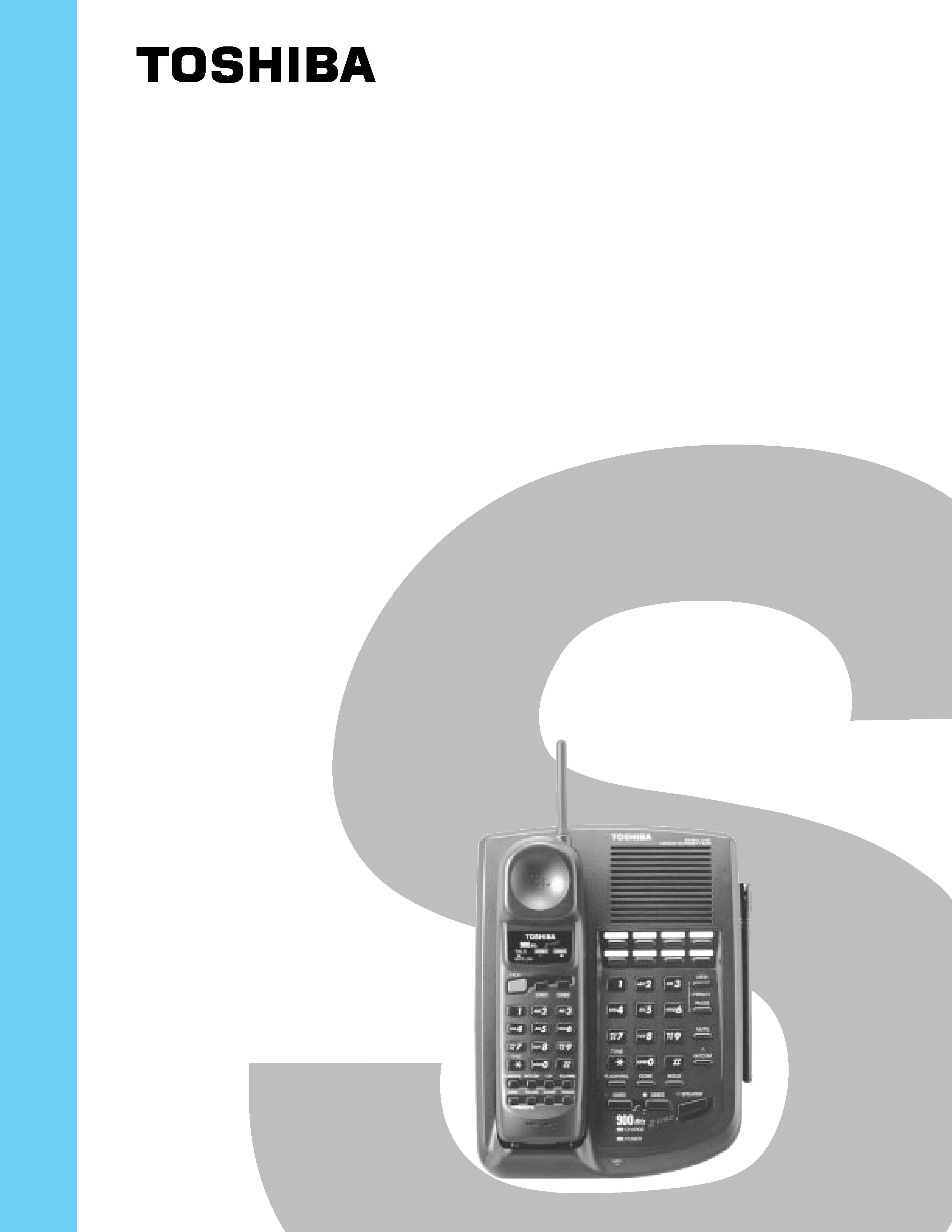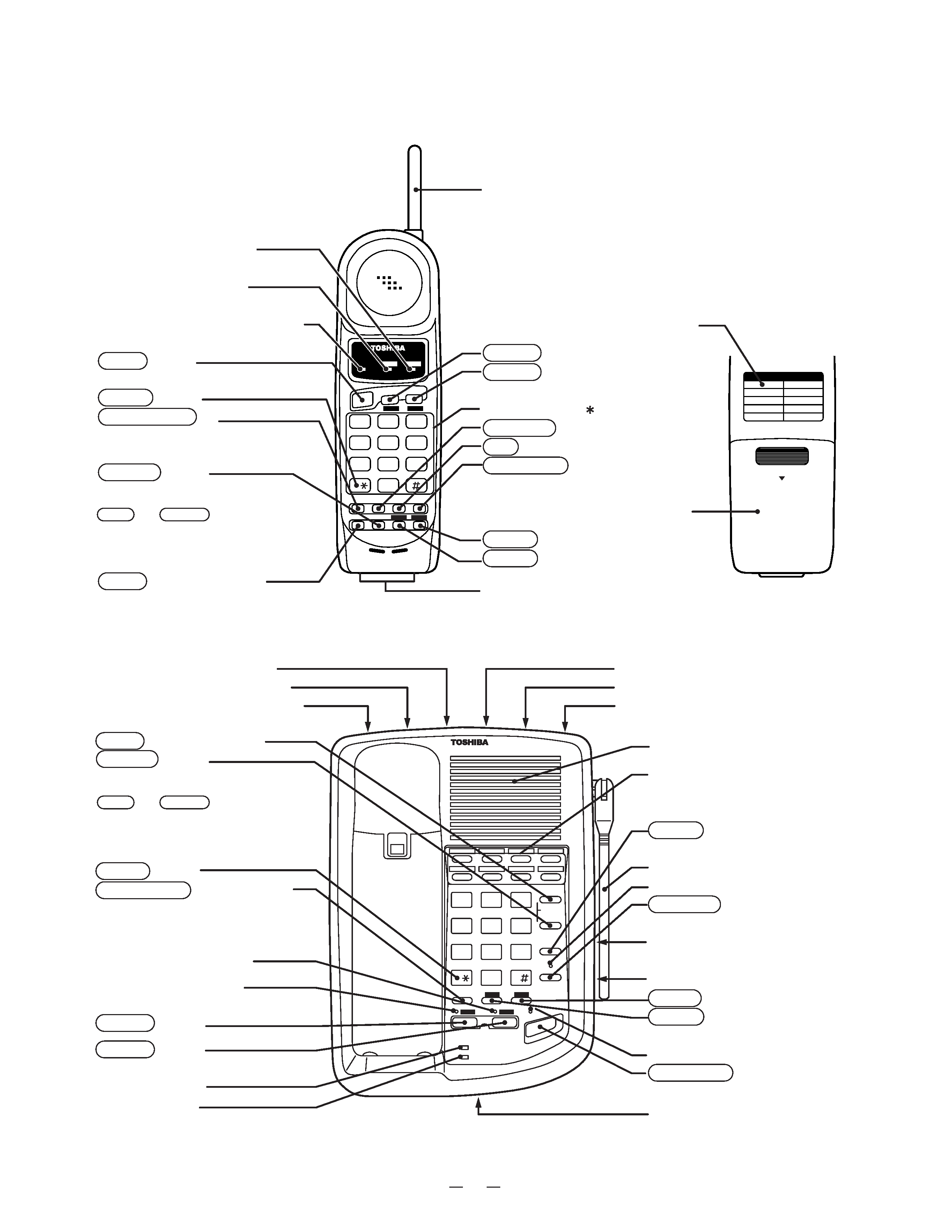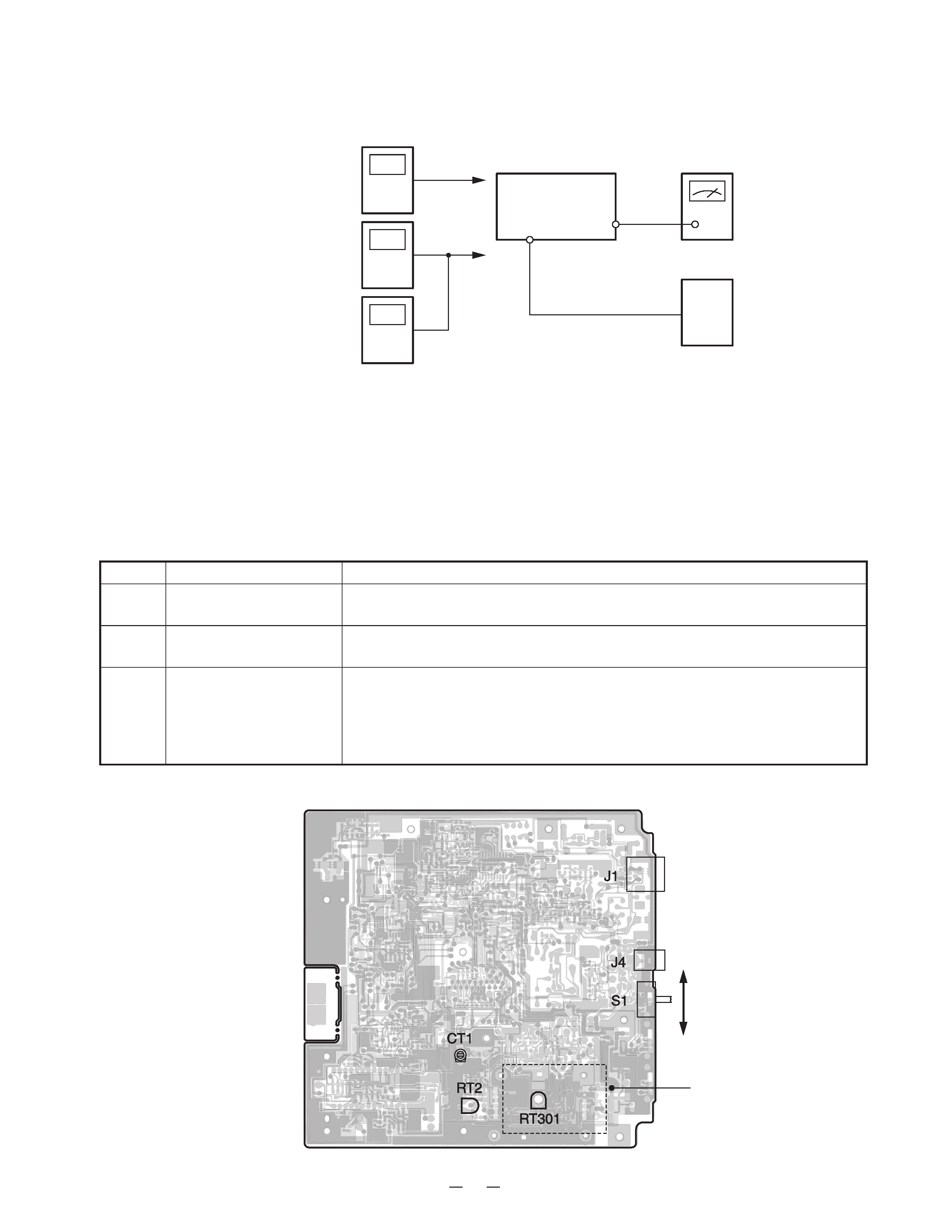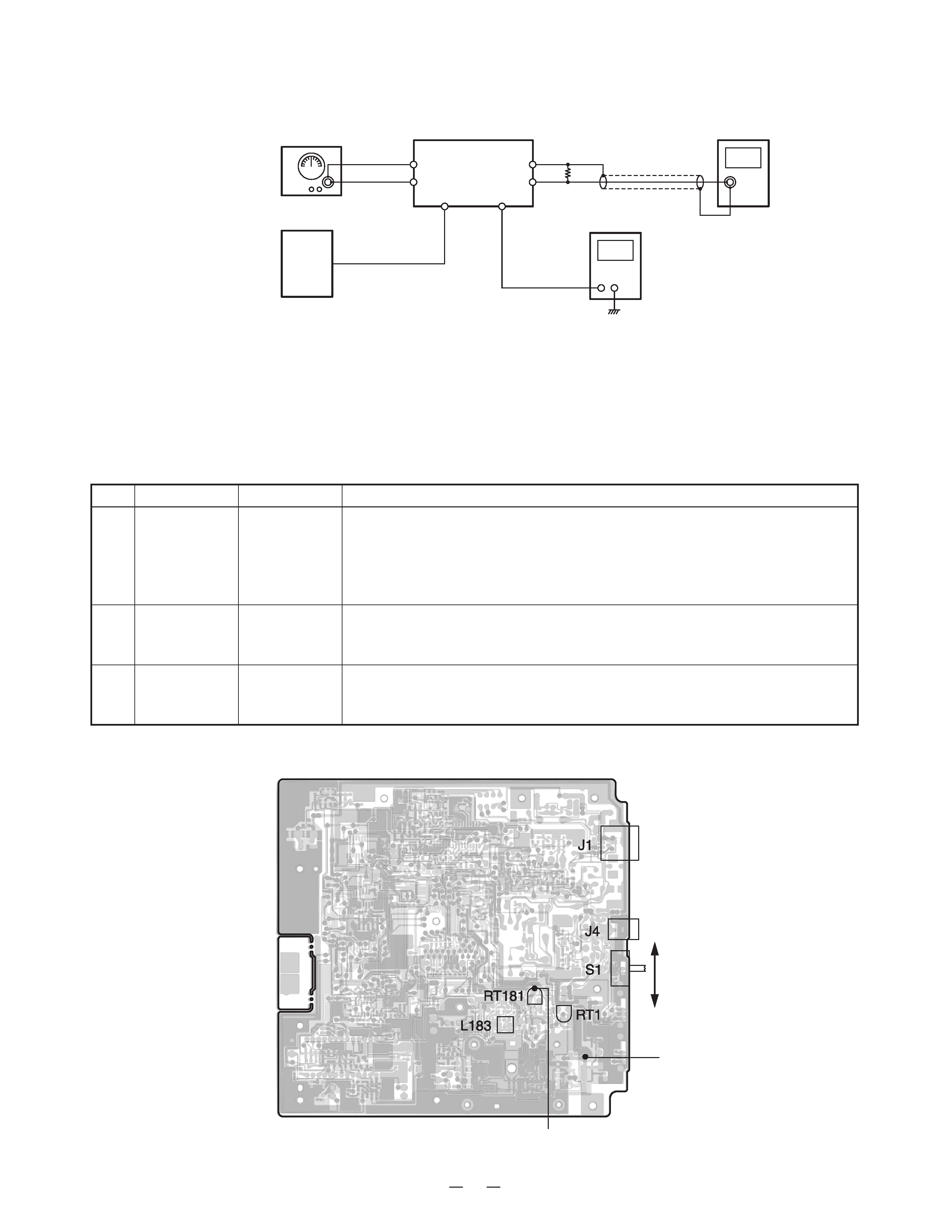
CORDLESS TELEPHONE
PUBLISHED IN JAPAN, Sep., 1999
SERVICE MANUAL
FILE NO. 2B0-9906
FT-8259

1
CONTENTS
SAFETY PRECAUTIONS ............................................................................................................ 1
OPERATING CONTROLS ........................................................................................................... 2
ALIGNMENT PROCEDURE ........................................................................................................ 3
BLOCK DIAGRAMS ..................................................................................................................... 7
SCHEMATIC DIAGRAMS ............................................................................................................ 9
TROUBLESHOOTING HINTS ................................................................................................... 14
IC AND TRANSISTOR VOLTAGE CHART ............................................................................... 23
SEMICONDUCTOR LEAD IDENTIFICATION ........................................................................... 29
ELECTRICAL PARTS LOCATION ............................................................................................. 32
WIRING DIAGRAMS .................................................................................................................35
EXPLODED VIEW AND MECHANICAL PARTS LIST ............................................................... 38
PARTS LIST ............................................................................................................................... 42
ASSEMBLY PARTS LIST .......................................................................................................... 58
SPECIFICATIONS ..................................................................................................................... 59
SAFETY PRECAUTIONS
Before returning any models to the customer, a safety check of the entire instrument should be made.
The service technician must be sure that no protective device built into the instrument by the manufacture
has become defective or inadvertently degraded during servicing.
1.WARNING:
Alterations of the design or circuitry of these models should not be made.
Any design changes or additions such as, but not limited to, circuit modifications, auxiliary speaker
jacks, switches, grounding, active or passive circuitry, etc. may alter the safety characteristics of these
models and potentially create a hazardous situation for the user.
Any design alterations or additions will void the manufacturer's warranty and will further relieve the
manufacturer of responsibility for personal injury or property damage resulting therefrom.
2.PRODUCT SAFETY NOTICE
Many electrical and mechanical parts in this chassis have special characteristics. These characteristics
often pass unnoticed and the protection afforded by them cannot necessarily be obtained by using
replacement components rated for higher voltage, wattage, etc. Replacement parts that have these
special safety characteristics are identified in this manual and its supplements; electrical components
having such features are indentified by a
in the schematic diagram and the parts list. Before
replacing any of these components, read the parts list in this manual carefully. The use of substitute
replacement parts that do not have the same safety characteristics as specified in the parts list may
create shock, fire or other hazards.

2
OPERATING CONTROLS
HANDSET CONTROLS AND FUNCTIONS
BASE UNIT CONTROLS AND FUNCTIONS
900MHz
2LINE
TALK
TALK
TONE
FLASH/RDL INTCOM
CH
VOL/RING
MEM
1-PRIVACY-2
PAUSE
BATT LOW
LINE1
123
ABC
DEF
456
GHI
JKL
MNO
789
PQ
RS
TUV
WX
YZ
0
OPER
LINE2
CONF
HOLD
LINE1
LINE2
SPEED DIAL INDEX
1
OPEN
2
34
56
78
90
900MHz 2 LINE
CORDLESS TELEPHONE FT8259
MEM
PRIVACY
GHI
JKL
MNO
ABC
DEF
PQ
RS
TUV
WX
YZ
PAUSE
MUTE
TONE
SPEAKER
CHARGE
900MHz
2 LINE
POWER
FLASH/RDL
CONF
HOLD
INTCOM
2
1
LINE1
LINE2
123
456
78
OPER
0
9
LINE 2 LED (Orange)
LINE 1 LED (Green)
TALK/BATT LOW LED (Red)
TALK button
TONE button
FLASH/RDL
(Flash/Redial) button
PAUSE button
LINE 1 button
LINE 2 button
Dialpad (0~9,
and # buttons)
INTCOM button
CH (Channel) button
VOL/RING
(Volume/Ringer volume)button
Charging Contacts
Battery compartment
ANTENNA
SPEED DIAL INDEX
MEM (Memory) button
PAUSE button
TONE button
FLASH/RDL (Flash/Redial)
button
LINE 2 LED (Orange)
LINE 1 LED (Green)
LINE 1 button
LINE 2 button
CHARGE LED
POWER LED
DC in 9V Jack
TEL LINE 2 jack
TEL LINE 1/2 jack
Speaker
One-touch dialing keys (1 to 8)
MUTE button
ANTENNA
INTCOM LED (Green)
INTCOM button
SPEED DIAL INDEX
Speaker volume control
HOLD button
CONF (Conference) button
SPEAKER LED (Green)
SPEAKER button
Microphone
T-P(TONE-PULSE) Switch
Line 1 ringer volume switch
Line 2 ringer volume switch
HOLD button
CONF (Conference) button
MEM (Memory) button
· While the handset is engaged in a
call on an outside line, pressing the
MEM and PAUSE buttons
continuously prevents someone
from picking up your conversation
on the base unit.
· While the base unit is engaged in a
call on an outside line, pressing the
MEM and PAUSE buttons
continuously prevents someone
from picking up your conversation
on the handset.

3
ALIGNMENT PROCEDURE
Base Unit
Transmitter Section
Connections
Preset
a) Connect the base RF unit to the base main unit.
b) Connect the AC adapter to the base unit while pressing the "
" and " # " keys and keep pressing it continuously
for approximate 1 second.
c) Release the keys when entering TEST mode with beep.
d) Press "1" key to enter the TEST mode 1.
Alignment Procedure
Alignment Point Location on Base Main PCB and Base RF PCB
S1
T/P Switch
P
T
RF Test Point
step
1
2
3
Adjustment
RT301
(TX Power)
CT1
(TX Frequency)
RT2
(TX Modulation)
Remarks
Connect the Power Meter to the RF test point on the Base MAIN PCB.
Adjust RT301 for a -5.0dBm reading on the Power Meter.
Connect the Frequency Counter to the RF test point on the Base MAIN
PCB. Adjust CT1 to make sure that the frequency is 926.897468 MHz.
Press the "2" key to enter the TEST Mode 2. Connect the AF Generator to
the TEL Line Jack on the Base Main PCB. Make sure that the output is 1
kHz 77.5 mV from the AF Generator.
Connect the Deviation Meter to the RF test point on the Base MAIN PCB.
Adjust RT2 to indicate ±8 kHz Dev.
Base RF PCB
J4
DC IN 9V Jack
J1
TEL LINE Jack
Base Main PCB
Power
Meter
RF
Test Point
BASE Unit
J4
DC IN
9V Jack
1kHz 77.5mV
AF GEN.
AC 120V
60Hz
Frequency
Counter
Deviation
Mater
RF
Test Point
J1
TEL Line
Jack
AC
Adapter

4
Receiver Section
Connections
Alignment Point Location on Base Main PCB and Base RF PCB
Preset
a) Connect the base RF unit to the base main unit.
b) Connect the AC adapter to the base unit while pressing the "
" and " # " keys and keep pressing it continuously
for approximate 1 second.
c) Release the keys when entering TEST mode with beep.
Alignment Procedure
step
1
2
3
Preset to
SG: 1mV
No modulation
SG: 1mV
1 kHz ±8kHz
deviation
SG: -7.0 dB
µµµµµV
1kHz ±8kHz
Deviation
Remarks
Press the "4" key to enter the TEST Mode 4. Connect the RF Signal
Generator to the RF test point on the Base MAIN PCB. Make sure that the
frequency is 903.002467 MHz.
Connect the DC Voltmeter to the AF test point. Adjust L183 to indicate DC
0.95 V.
Connect the AC Voltmeter across a 600-ohm dummy to the Telephone Line
Jack. Adjust RT1 for a 220 mV reading on the AC voltmeter.
Press the "5" key to enter the TEST Mode 5. Make sure that the
frequency of RF SG output is 903.002467 MHz. Adjust RT181 to turn to
the point where the INTCOM LED just turns on.
Adjustment
L183
(Discriminator
Voltage)
RT1
(RX AF
Voltage)
RT181
(SQ Point)
S1
T/P Switch
P
T
RF Test Point
J4
DC IN 9V Jack
J1
TEL LINE Jack
Base Main PCB
AC Voltmeter
BASE Unit
AF
Terminal
Dummy Load
(600-ohm)
RF SG
AC 120V
60Hz
J4
DC IN 9V Jack
+
RF
Test Point
J1
TEL Line
Jack
AC
Adapter
DC Voltmeter
-
+
-
AF Test Point
